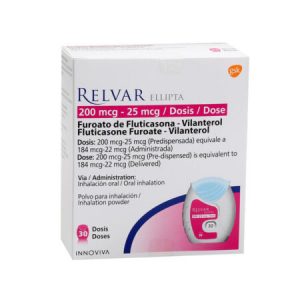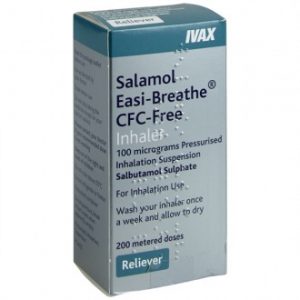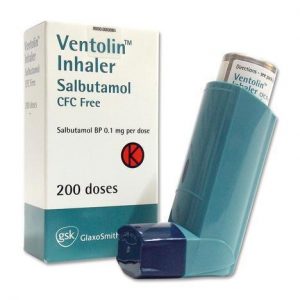
Humidifier Vs. Dehumidifier: What’s the Difference and How They Improve Indoor Air Quality
Introduction: Indoor air quality plays a crucial role in our overall health and comfort, and the level of humidity in the air is a significant factor to consider. Humidity refers to the amount of water vapor present in the air in relation to its temperature. An optimal relative humidity (RH) level of 30-50% is considered comfortable for most indoor environments. When humidity levels deviate from this range, it can lead to various discomforts and health issues. In extreme cases, excessively dry air can cause skin problems, while excessive humidity can promote bacterial growth and exacerbate respiratory conditions such as allergies and asthma.
To combat issues related to high or low humidity, two essential devices come to the rescue:
1. Humidifier: Adding Moisture to Dry Air Humidifiers are devices designed to increase the humidity level in indoor spaces, making the air more comfortable to breathe. They achieve this by releasing moisture into the air, thereby raising the relative humidity. There are two main types of humidifiers: cool-mist humidifiers and warm-mist humidifiers (steam vaporizers).
Cool-Mist Humidifiers:
- Utilize an impeller, ultrasonic technology, or evaporators to disperse tiny water droplets into the air.
- Water droplets are cold, which can contribute to cooling the air.
- No significant advantage of one type over the other; choice depends on personal preference.
Steam Vaporizers (Warm-Mist Humidifiers):
- Operate by heating water until it boils and produces steam.
- The steam is cooled before being released into the air.
- Some models can be used with inhalants or essential oils, which may benefit individuals with allergies or asthma.
2. Dehumidifier: Removing Excess Moisture from Humid Air Dehumidifiers work opposite to humidifiers, reducing the moisture in the air to maintain a comfortable RH level (usually between 30-50%). They are particularly useful in damp or humid environments, preventing issues like mold growth and musty odors.
How Dehumidifiers Work:
- Warm air is drawn in by a fan and passed over metal coils cooled by a refrigerant.
- Cooling the air causes the moisture to condense into water droplets.
- The collected water is stored in a tank outside the dehumidifier.
- The drier air is then expelled back into the indoor environment through a fan.
Humidifier Vs. Dehumidifier: Which One to Choose?
When deciding between a humidifier and a dehumidifier, it’s essential to consider the specific needs of your indoor environment:
Choose a Humidifier If:
- The air is excessively dry, leading to issues like dry skin, irritated nasal passages, and static electricity.
- You want to add moisture to the air during colder months when indoor heating can significantly reduce humidity levels.
- You prefer cool-mist or warm-mist options based on personal comfort and needs.
Choose a Dehumidifier If:
- The air is excessively humid, leading to condensation on windows, musty odors, and potential mold growth.
- You want to prevent mold and mildew problems in basements, bathrooms, or other damp areas.
- Your indoor environment feels muggy and uncomfortable due to high humidity levels.
Humidifiers, Dehumidifiers, and Air Purifiers: Understanding the Differences
While humidifiers and dehumidifiers focus on managing indoor humidity levels, air purifiers serve a different purpose. Air purifiers are designed to improve air quality by removing particles such as dust, pollen, pet dander, smoke, and other allergens from the air. They complement the functions of humidifiers and dehumidifiers by ensuring that the air being circulated is clean and free from contaminants.
Conclusion: Maintaining the right indoor humidity level is essential for our health, comfort, and the overall well-being of our living spaces. Humidifiers and dehumidifiers offer effective solutions to address issues related to excessively dry or humid air, while air purifiers ensure that the air we breathe is clean and allergen-free. By understanding the differences between these devices, you can make informed choices to create a healthier and more comfortable indoor environment. In the following sections, we will delve deeper into the benefits of using humidifiers and dehumidifiers, as well as explore the advantages of combining these devices with air purifiers for optimal indoor air quality.
Benefits of Humidifiers and Dehumidifiers for Indoor Air Quality
1. Humidifiers: Adding Moisture for Health and Comfort
Humidifiers play a vital role in improving indoor air quality, especially when the air is too dry. They add moisture to the air, which can offer several health benefits and alleviate discomfort caused by dry conditions. Some key benefits of using humidifiers include:
- Relief from Respiratory Issues: Properly humidified air can soothe irritated airways and reduce the risk of infections, making it beneficial for individuals with asthma, allergies, bronchitis, and sinus inflammation.
- Preventing Dryness: Humidifiers help combat dryness in the throat, nosebleeds, and cracked skin, particularly during colder months or in regions with low humidity levels.
- Cold and Flu Symptom Relief: Humidifiers can ease cold and flu symptoms such as coughing and wheezing, making it easier to breathe and sleep.
Types of Humidifiers: Choosing the Right One
When considering a humidifier, you have the option of cool-mist or warm-mist humidifiers (steam vaporizers). Each type has its benefits, and the choice depends on personal preferences and safety considerations:
- Cool-Mist Humidifiers: Safer to use, especially around children, as they do not involve hot water that could cause burns if spilled. However, they need regular cleaning to prevent the dispersal of airborne bacteria or viral material.
- Steam Vaporizers (Warm-Mist Humidifiers): These models boil water to produce steam, effectively eliminating bacteria or pathogens before releasing the steam. However, caution should be exercised when using them around children or pets due to the risk of burns.
2. Dehumidifiers: Controlling Humidity for a Healthier Environment
Dehumidifiers are essential devices when the indoor air is excessively humid. They help maintain optimal humidity levels, typically between 30-50%, which is crucial for preventing issues associated with high humidity. The benefits of using dehumidifiers include:
- Mold and Allergen Prevention: By reducing excess moisture, dehumidifiers inhibit mold and dust mite growth, helping to alleviate allergic reactions and asthma symptoms.
- Improved Respiratory Health: Dehumidifiers can be beneficial for individuals with chronic or seasonal allergies, providing relief when moving to a new location where allergy symptoms worsen.
- Enhanced Air Quality: Removing excessive moisture from the air helps prevent musty smells and creates a more comfortable and pleasant living environment.
Common Conditions Helped by Humidifiers and Dehumidifiers:
Humidifiers and dehumidifiers can significantly impact various respiratory conditions, enhancing overall well-being:
- Asthma: Humidifiers add moisture to dry air, reducing the risk of airway infections, while dehumidifiers control humidity levels and minimize airborne pollutants.
- Allergies: Humidifiers help reduce sinus inflammation and ease breathing, while dehumidifiers create an inhospitable environment for allergens like dust mites and mold.
- Bronchitis: Humidifiers can alleviate symptoms, while dehumidifiers combat triggers like mold and bacteria.
- Cold: Humidifiers can relieve coughing and wheezing during colds, providing relief and comfort.
The Role of Air Purifiers: Removing Airborne Pollutants
Air purifiers are crucial for improving air quality by filtering particles and pollutants. While they don’t directly humidify or dehumidify the air, they offer their own set of benefits:
- Allergy and Asthma Relief: Air purifiers can remove airborne allergens and irritants, alleviating allergy and asthma symptoms.
- Removal of Fine Particles (PM2.5): Some air purifiers can capture extremely tiny particles, such as PM2.5, associated with heart, lung, and brain conditions.
Combining Humidifiers, Dehumidifiers, and Air Purifiers for Optimal Air Quality
To achieve the best indoor air quality, using a combination of these devices is highly effective. Tailoring their usage based on seasonal changes and specific indoor conditions allows for a healthier and more comfortable living environment. By using humidifiers, dehumidifiers, and air purifiers in conjunction, you can:
- Maintain a comfortable and safe humidity level.
- Minimize the presence of airborne pollutants and allergens.
- Enhance respiratory health for you and your family.
Conclusion: Humidifiers and dehumidifiers serve distinct yet equally important roles in optimizing indoor air quality. While humidifiers add moisture to dry air, improving respiratory comfort, dehumidifiers remove excess moisture, reducing the risk of mold and allergens. Air purifiers, on the other hand, effectively filter out airborne pollutants, further enhancing the overall air quality. By strategically combining these devices, you can create a healthier and more pleasant living space, ensuring the well-being of everyone in your home.
Resources for Optimizing Indoor Air Quality:
Websites and Online Resources:
American Lung Association - The American Lung Association provides comprehensive information on indoor air quality, including tips for improving air quality and the role of humidifiers, dehumidifiers, and air purifiers in respiratory health. Visit here
Environmental Protection Agency (EPA) - Indoor Air Quality - The EPA offers valuable resources on indoor air quality, covering topics like common indoor pollutants, ventilation, and the use of air-cleaning devices. Readers can find authoritative information on the benefits and proper use of humidifiers, dehumidifiers, and air purifiers. Visit here
Books:
"The Indoor Air Quality Handbook" by John D. Spengler, Jonathan M. Samet, and John F. McCarthy - This comprehensive book explores various aspects of indoor air quality, including strategies for improving indoor environments, managing humidity levels, and the use of air-cleaning devices. Amazon link
"The Allergy-Fighting Garden" by Thomas Leo Ogren - While not directly focused on indoor air quality, this book offers valuable insights into reducing allergens and promoting healthier environments, which can complement the use of air purifiers and dehumidifiers. Amazon link
Academic Journals and Research Papers:
"Indoor Air Quality and Human Health" - World Health Organization (WHO) - This report from WHO examines the impact of indoor air quality on human health and provides evidence-based recommendations for maintaining healthier indoor environments. Read the report
"Humidifiers for COPD: A Systematic Review" - International Journal of Chronic Obstructive Pulmonary Disease - This research paper evaluates the benefits of using humidifiers in chronic obstructive pulmonary disease (COPD) management, offering insights into their efficacy and safety. Read the paper
Reports and Studies:
"Effects of Dehumidification in Asthma and Allergic Rhinitis Patients Sensitized to House Dust Mites: A Double-Blind, Placebo-Controlled Study" - Journal of Investigational Allergology and Clinical Immunology - This study investigates the impact of dehumidification on asthma and allergic rhinitis patients, shedding light on the potential benefits of dehumidifiers in managing respiratory conditions. Read the study
"Effect of Humidified Air Delivered Via Nasal Cannula on the Physiological Responses of Preterm Infants" - Journal of Neonatal Nursing - This research examines the effects of humidified air on preterm infants, providing insights into the benefits of maintaining optimal humidity levels in neonatal care settings. Read the study
Professional Organizations and Associations:
American Academy of Allergy, Asthma & Immunology (AAAAI) - AAAAI is a trusted source for information on respiratory health and indoor air quality. Their resources cover a wide range of topics, including the management of asthma and allergies in relation to indoor environments. Visit here
American Society of Heating, Refrigerating and Air-Conditioning Engineers (ASHRAE) - ASHRAE provides valuable guidelines on indoor air quality and HVAC systems, offering insights into the proper use of humidifiers, dehumidifiers, and air purifiers for healthier indoor environments. Visit here
Please note that while these resources are authoritative, always consult with healthcare professionals and experts for personalized advice related to your specific health conditions and indoor air quality needs.





